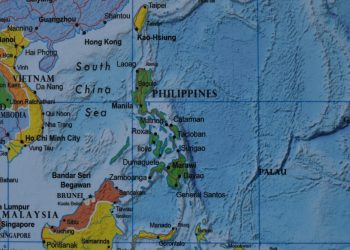Sea ice over the Arctic Ocean reached its maximum extent for the year on March 17 at 14.48 million square kilometers (5.59 million square miles), which is the second lowest in the 39-year satellite record, falling just behind 2017.
This year’s maximum extent is 1.16 million square kilometers (448,000 square miles) below the 1981 to 2010 average maximum of 15.64 million square kilometers (6.04 million square miles).
[smlsubform prepend=”GET THE SAFETY4SEA IN YOUR INBOX!” showname=false emailtxt=”” emailholder=”Enter your email address” showsubmit=true submittxt=”Submit” jsthanks=false thankyou=”Thank you for subscribing to our mailing list”]
The four lowest seasonal maximums all happened during the last four years. The 2018 maximum is 60,000 square kilometers (23,200 square miles) above the record low maximum that occurred on March 7, 2017; 40,000 square kilometers (15,400 square miles) below the 2015 and 2016 maxima (now tied for third lowest); and 190,000 square kilometers (73,400 square miles) below the 2011 maximum, which is now fourth lowest.
The reduction of the Arctic sea ice cover has many effects, impacting climate and weather, the marine environment, and indigenous human communities. The reduced ice is also changing shipping routes, increasing coastal erosion and affecting ocean circulation.
Claire Parkinson, senior climate scientist at NASA’s Goddard Space Flight Center in Greenbelt, Maryland, mentioned:
The Arctic sea ice cover continues to be in a decreasing trend and this is connected to the ongoing warming of the Arctic. It’s a two-way street: the warming means less ice is going to form and more ice is going to melt, but also, because there’s less ice, less of the sun’s incident solar radiation is reflected off, and this contributes to the warming.

































































